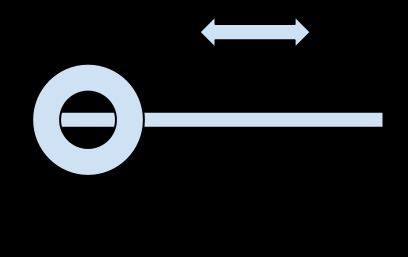 | ||
The newton metre (also newton-metre, symbol N m or N·m) is a unit of torque (also called "moment") in the SI system. One newton metre is equal to the torque resulting from a force of one newton applied perpendicularly to a moment arm which is one metre long.
It is also used less commonly as a unit of work, or energy, in which case it is equivalent to the more common and standard SI unit of energy, the joule. In this very different usage the metre term represents the distance travelled or displacement in the direction of the force, and not the perpendicular distance from a fulcrum as it does when used to express torque. This usage is generally discouraged, since it can lead to confusion as to whether a given quantity expressed in newton metres is a torque or a quantity of energy. However, since torque represents energy transferred or expended per angle of revolution, one newton metre of torque is equivalent to one joule per radian.
Newton metres and joules are dimensionally equivalent in the sense that they have the same expression in SI base units:
Again, N⋅m and J are distinguished in order to avoid misunderstandings where a torque is mistaken for an energy or vice versa. Similar examples of dimensionally equivalent units include Pa versus J/m³, Bq versus Hz, and ohm versus ohm per square.
